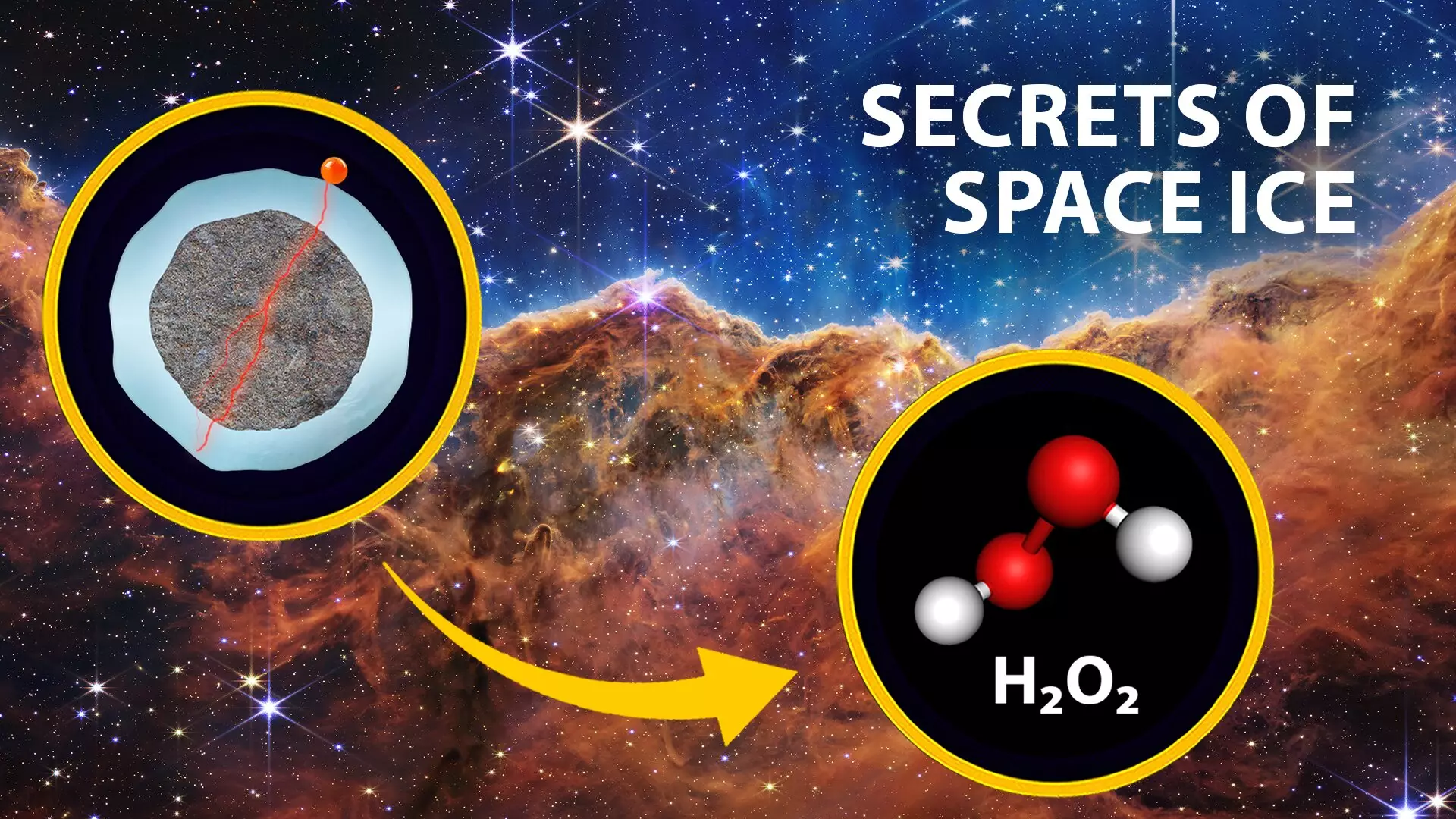The age-old questions of “Who are we?” and “Why are we here?” resonate deeply within humanity’s quest for understanding our cosmic origins. The essence of these inquiries is eloquently summarized in the lyrics of Crosby, Stills, Nash & Young’s iconic song, which reminds us that we are essentially stardust—an outcome of complex chemical interactions that unfold within the expansive clouds of interstellar gas and dust. Recent scientific explorations have focused on how these interactions might give rise to prebiotic molecules, the foundational building blocks of life that could not only exist on Earth but also elsewhere in the universe. This ongoing research sheds light on the significance of low-energy electrons produced by cosmic radiation interacting with ice particles in space.
A significant stride has been made in this field of study by a group of researchers, including undergraduate student Kennedy Barnes, who is set to present their findings at the upcoming American Chemical Society’s Fall 2024 meeting. Such gatherings exemplify the symbiosis between scientific inquiry and community engagement, showcasing about 10,000 presentations exploring diverse topics across the scientific spectrum. Under the mentorship of esteemed chemistry and physics professors, Barnes and her team aim to dissect the competing roles of low-energy electrons and photons in catalyzing the chemical reactions that synthesize prebiotic molecules in extraterrestrial environments.
Although previous studies have hinted that both low-energy electrons and photons can trigger similar chemical processes, Barnes’s research suggests that their effectiveness may differ drastically in outer space. The calculations conducted by the team indicate a remarkable finding: there could be a significantly higher presence of cosmic-ray-induced electrons compared to photons within cosmic ice. This poses a compelling argument that electrons could play a vital, and potentially dominant, role in initiating the synthesis of vital prebiotic compounds in the cosmos.
The researchers’ dedication doesn’t stop at theoretical models; they have ventured into experimental paradigms to elucidate the fundamental mechanisms at play. By recreating extraterrestrial conditions in a controlled laboratory environment—a technique that conveys the ambition and ingenuity of contemporary science—they examine the interactions between ice films and both electrons and photons. Utilizing an ultrahigh-vacuum chamber and sophisticated electron guns alongside laser-driven plasma lamps, the scientists can meticulously bombard nanoscale ice films to observe the resultant chemical products.
While their primary focus lies in ice compositions analogous to those found in space, there are broader implications for understanding cosmic bodies like Europa, one of Jupiter’s moons, which is encased in thick layers of ice. The proposed mission of the Europa Clipper aims to explore and unveil the secrets of such celestial icy realms, potentially confirming the presence of prebiotic chemistry that mirrors Earth’s primordial paths toward life.
What may initially appear to be a pursuit of cosmic knowledge also hints at practical ramifications for life on Earth. The findings emerging from studies of low-energy electrons extend well beyond astrobiology; they hold promise for medical and environmental applications as well. For instance, evidence suggests that these low-energy electrons, when interacting with water, can produce damaging reactive oxygen species that have significant implications for both human health and stratospheric ozone depletion. The parallels drawn between cosmic radiation impacts and medical treatments for conditions like cancer underscore a fascinating intersection between astrophysics and healthcare—demonstrating how understanding the cosmos can lead to advancements in bioengineering and environmental sciences.
Moreover, the research team’s prior experiences with wastewater treatment highlight potential avenues for mitigating environmental contaminants using radiolysis, a process that could become increasingly necessary as global water challenges mount. Thus, the implications of their research resonate throughout various fields, showcasing the interconnected narrative that ties cosmic phenomena to terrestrial considerations.
In closing, as the field of astrochemistry continues to expand, researchers like Barnes and her colleagues are excited about the prospects of their work. By investigating alternative molecular compositions and the reactions initiated by low-energy electrons, they aim to deepen our understanding of prebiotic pathways potentially prevalent in the universe. Their findings are poised to enrich the interpretation of data from ambitious space missions, such as NASA’s James Webb Space Telescope.
These endeavors illustrate a new paradigm in scientific exploration—a “New Space Age” that intertwines the quest for knowledge about our origins with responsible stewardship of our planet. There is an optimism in the air, as researchers eagerly anticipate the revelations that lie ahead, perhaps understanding that every question of existence is intrinsically linked to the stars from which we descend. The continuous journey to unravel these mysteries not only fuels our curiosity but also sparks the imagination of future generations yearning to understand their place within the cosmos.

